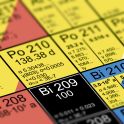
Search for a repository in Germany: Temperature limits for storage casks have been set
Why is a temperature limit for casks necessary?
In Germany, high active waste is to be stored in a repository in deep geological rock formations. Throughout the country, the three possible types of host rock are rock salt, clay, and crystalline rock.
The 2017 Site Selection Act stipulated a maximum temperature of 100 °C on the surface of the waste casks as a precautionary measure, regardless of the host rock. The Nuclear Waste Management Commission (ESK) then recommended deriving individual temperatures depending on the respective host rock and site. GRS experts were also involved in the associated work.
GRS develops scientific basis for host-rock-specific temperature limits
The task of GRS was to provide the basis for the decision as to which temperature limits could be used for the preliminary safety analyses.
In terms of methodology, GRS proceeded by assessing which processes in the repository have an influence on the various components - for example, casks, drift extensions and sealing structures. The processes considered were those that influence the dispersion of radioactive materials and the so-called "integrity" of a repository. In this context, integrity means the stability, functionality and safety of the repository over a long period of time. By prioritising and weighting these processes, the researchers developed a method that allowed them to deduce what influence the temperature could have on the entire repository system.
The method can be used to determine whether a component in the repository is temperature-compatible or not. Temperature-compatible here means that the component retains its favourable properties with regard to its integrity and the transport of radionuclides even at higher temperatures. From this, it can be deduced for the planning of the repository which temperatures will work well for the host rock and the emplacement concept. The more precisely a site is known, the better the statements on temperature compatibility can be refined using this method. GRS has applied this method to all three host rock types.
New temperature limits for casks
In April 2024, the Bundesgesellschaft für Endlagerung (BGE) set official temperature limits for the storage casks based on the research work carried out by GRS for specific host rock types. For rock salt, the temperature on the casks should not exceed 150 degrees Celsius. A temperature limit of 100 degrees Celsius was specified for clay and crystalline rock. The BGE is dependent on defining limit temperatures in order to develop the proposal for the possible regions for a repository site by the end of 2027 from the sub-areas already defined, which will then be explored above ground.
Project highlights Disposal

Repository researchers use simulation software to draw a picture of the future of a repository system. How precise and realistic the forecast is depends largely on the input data used for the calculations. The Radi simulation code developed by GRS calculates the decay chains of the radioactive materials from the stored waste. It answers the question of how much 'radioactivity' is still present after a certain period of time and thus forms the basis for further simulations.